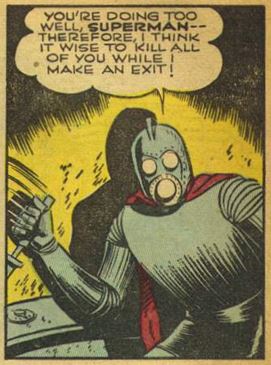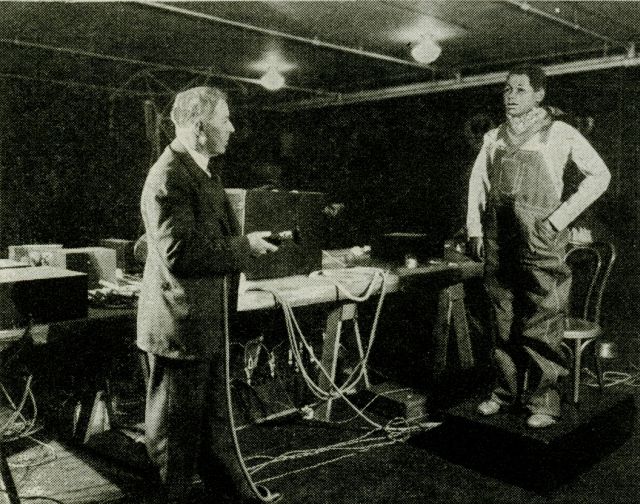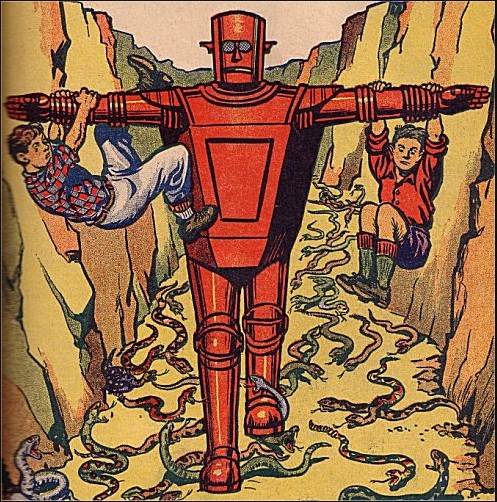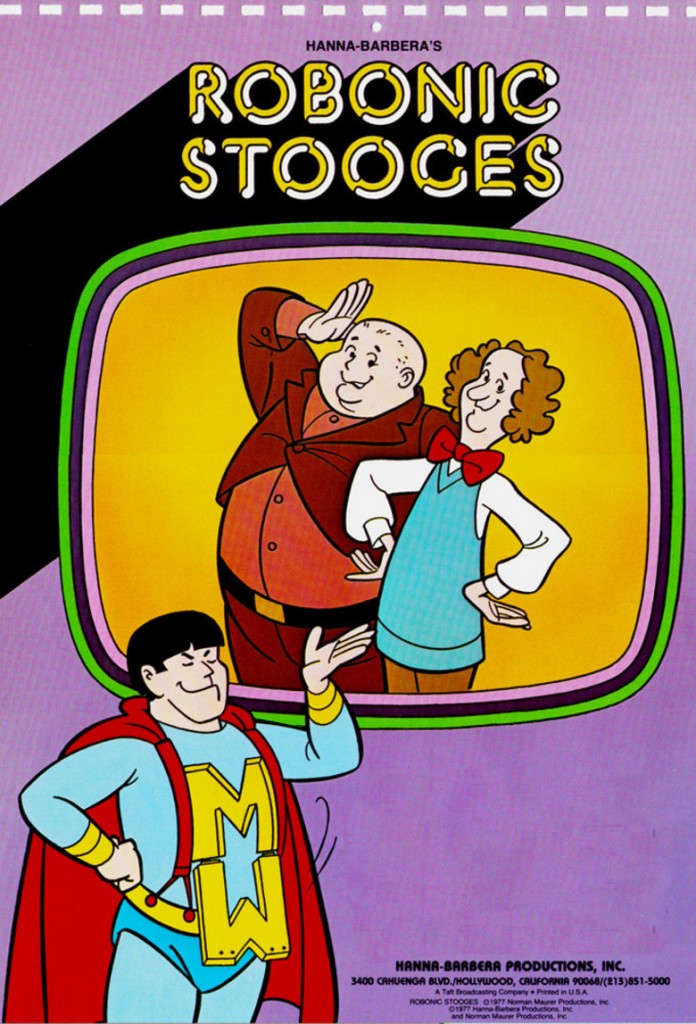
Marshall McLuhan may have proclaimed the the medium is the message but robots transcended any one medium by the 1970s. Audiences found robots everywhere: in movies, on television, in comic books and strips, in cartoons, in toys, in print science fiction and increasingly in mainstream thrillers.
Martin Caidin created a sensation with his 1972 bestseller, Cyborg. Stalwart astronaut/test pilot Steve Austin emerges from a plane wreck with half his body damaged. Incredibly expensive – six million dollars worth! – mechanical parts with capabilities beyond those of flesh are grafted to replace his missing arm, eye, and legs, making him a bionic superman. (The term bionic was, in the poetic words of Philippe Goujon, “invented by Major Jack E. Steele of the aerospace medical division of the U. S. Air Force on an August evening in 1958” as a portmanteau of biology and electronics.) Less than a year after the book’s release, a made-for-television movie hit the airwaves. Two more movies begat The Six Million Dollar Man tv series which begat The Bionic Woman. Such are empires launched.
Robots almost always had been comic sidekicks or deadly menaces in popular media, rarely lead characters. The Six Million Dollar Man was the first to successfully plug that enormous hole on television, dodging the identification problem by making a human mechanical. (My Living Doll from 1964 starred an actual robot but got canceled partway though its first season.) With a formula for success in hand, other television creators took a crack at the magical potential audience draw of bionics. Such a cracked mind belonged to Norman Maurer, who lead audiences down a psychedelic rabbit hole toward the most mind-blowing mash-up of genres in popular culture’s dubious history.
…
Read More Read More
![1962-01-31 [Pittsfield MA] Berkshire Eagle 1 pedipulator headline](https://www.blackgate.com/wp-content/uploads/2019/08/1962-01-31-Pittsfield-MA-Berkshire-Eagle-1-pedipulator-headline.jpg)
![1962-07-24 Allentown [PA] Morning Call 21 pedipulator illus cropped - Copy](https://www.blackgate.com/wp-content/uploads/2019/08/1962-07-24-Allentown-PA-Morning-Call-21-pedipulator-illus-cropped-Copy.jpg)
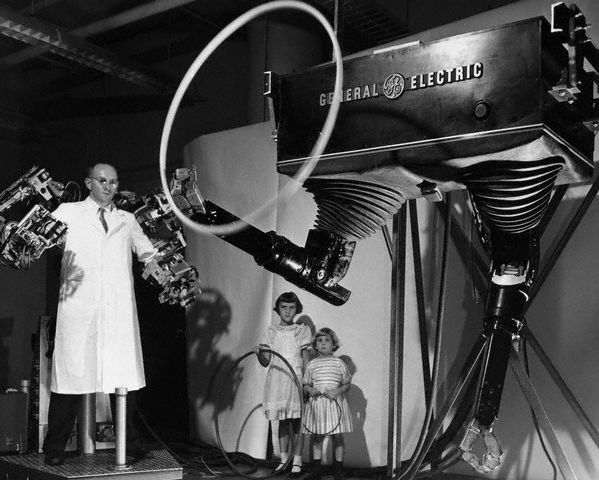
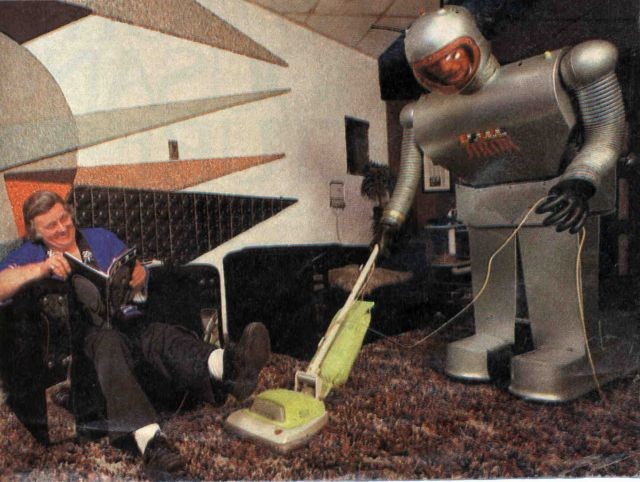
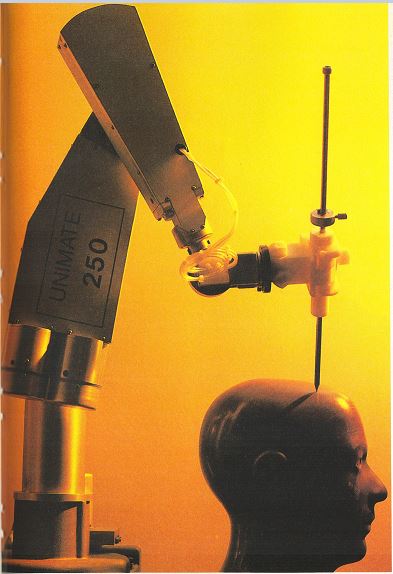
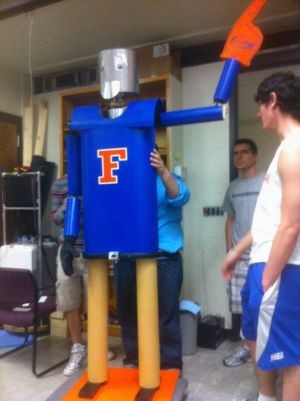
![1937-10-17 San Francisco Examiner [American Weekly 3] A Whole World of Metal Men, The Last Robot](https://www.blackgate.com/wp-content/uploads/2019/06/1937-10-17-San-Francisco-Examiner-American-Weekly-3-A-Whole-World-of-Metal-Men-The-Last-Robot.jpg)
